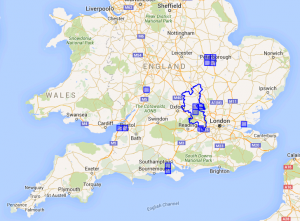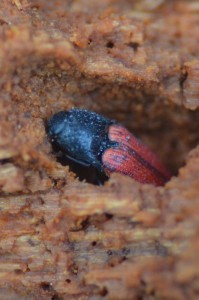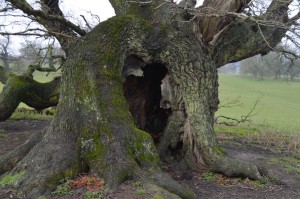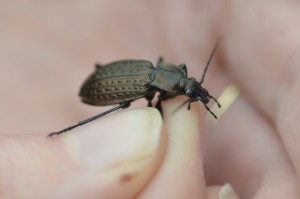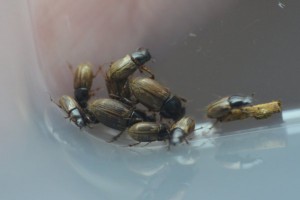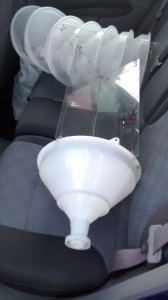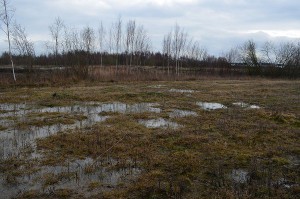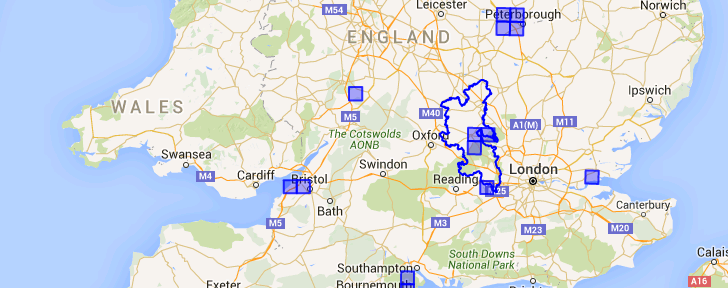
Wow, it is fair to say that the last four weeks have been a whorl-wind of non stop adventure, as the map below showing where I have recorded wildlife in the last month, proves.
Dead Wood Invertebrates
I have spent four days in Windsor Park (Berkshire) in the last month. This site is of international importance for its dead wood associated wildlife and I have been focusing on the beetles there. This site is a great location for me to learn about dead wood habitats and to learn about surveying techniques. This time in the field is invaluable for helping to develop a specialism.
For the same reason I have also visited Bredon Hill National Nature Reserve in Worcestershire, this is another highly important site and is very different to Windsor. I was also lucky enough to go to an Ancient Tree Forum event at Burghley Park in Lincolnshire. Here I could learn from the experts about the management of ancient trees, something that I know nothing about! I also got to meet Keith Alexander, an expert on dead wood invertebrates, and Roger Morris, an expert on hoverflies who has always been very helpful when I get stuck on an identification.
More Beetles!
I have also been trying to get to grips with beetles that are not associated with dead wood, specifically ground beetles and dung beetles. I was lucky enough to go on a BENHS ground beetle ID course in Reading.
I learnt the basics about identifying these beetles, and could put names to some of the ground beetles that I had seen in the past. I also learnt how to gently but firmly hold the beetles in order to examine them in the field. I have since found ground beetles in my own time and are more confident about trying to tackle identifying them.
I’ve also fallen in love with dung beetles! During my time in Oxford I met Darren Mann, Head of Life Collections there. Darren is an expert on dung beetles and goes all over the world working on them. I agreed to spend a day in the field with him and some other dung beetle enthusiasts in the New Forest. I spent the day with them learning about dung beetles and am now hooked. I can’t walk past livestock now without thinking about dung beetles 🙂
Planning for the Year
I have also spent a lot of time in the last month planning for the year ahead. I have decided that my main project will be looking at the dead wood associated invertebrates of the Great Park at Blenhiem Palace. This site has the Europe’s largest collection of ancient oak trees, yet is relatively understudied in terms of its deadwood invertebrates. So the site is perfect for me to refine my identification and survey skills while engaging with the public, providing Blenheim with some meaningful data and sampling their cafes! I will have to spend at least 2 days a month on site to service my traps which requires a lot of planning! Apart from planning, it also requires equipment! I am lucky because I have an equipment budget for my traineeship, so am now furnished out with new survey equipment and identification guides, all of which I can keep.
I have also been starting to plan some other projects this year which will hopefully include doing some fenland surveys for the Bedfordshire, Cambridgeshire and Northamptonshire WIldlife Trust. I will also be doing a monthly bumblebee transect on Canvey Wick, a nature reserve in Essex, which under the management advice of Buglife, is packed with rare invertebrates.
Outreach
Invertebrates suffer from bad publicity and as someone who cares passionately for these creatures, it is up to me to try and encourage others to care as much as I do. I already do this in a number of ways, through my personal and the Natural Talent twitter accounts, but am planning on doing a lot more this year. I will be going out with my local TCV group to volunteer with them and in the end, run some workshops for them on their local invertebrates. I have also been blogging for Natural England on their Species Status Review Project, which will revolutionise conservation efforts by allowing us to prioitise the species in most need of our help. I have been supported and inspired by a number of people, getting me to where I am today, so I hope through this traineeship to give something back and inspire others to love invertebrates!
Ryan Clark

